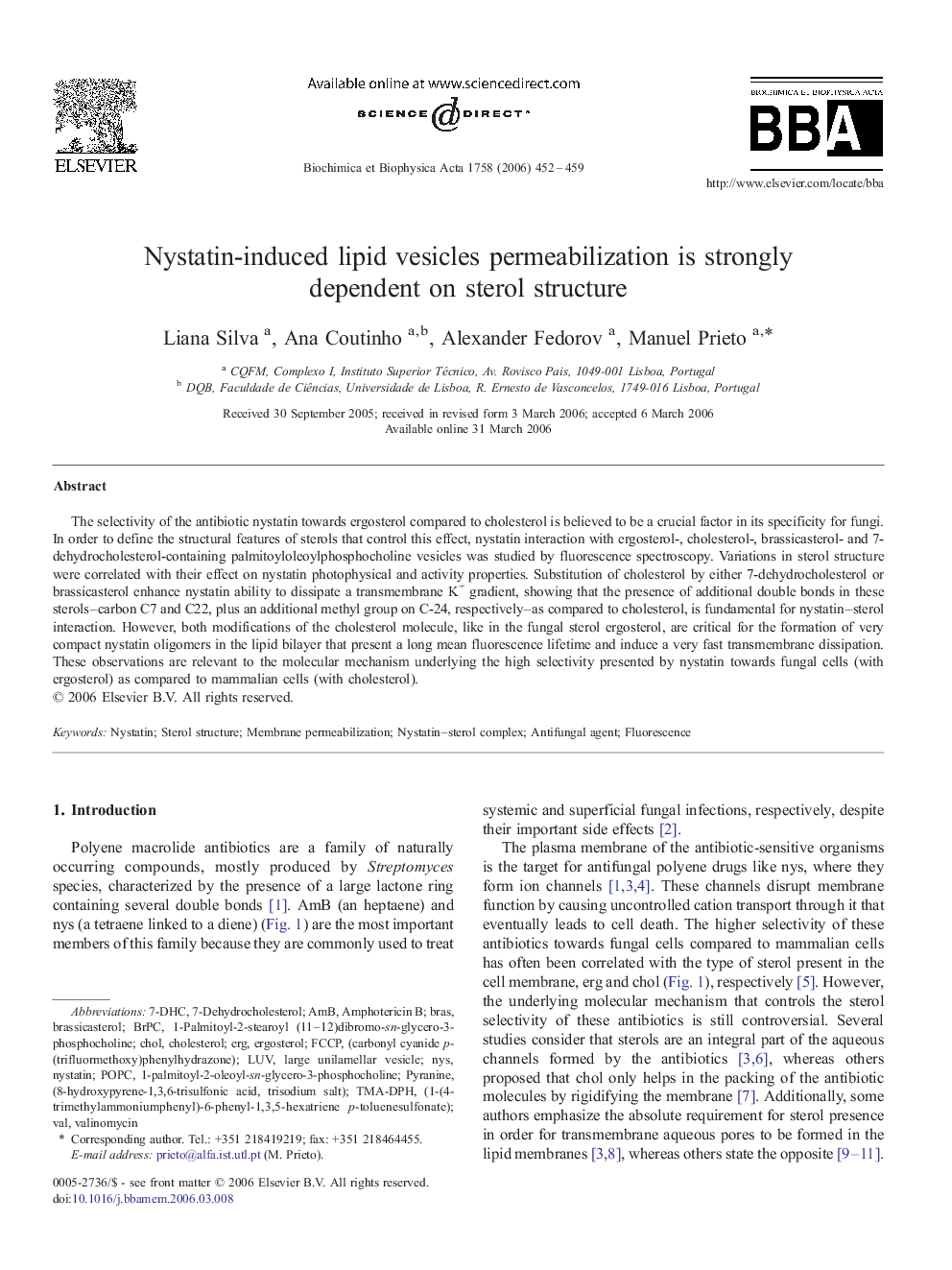| Article ID | Journal | Published Year | Pages | File Type |
|---|---|---|---|---|
| 1946117 | Biochimica et Biophysica Acta (BBA) - Biomembranes | 2006 | 8 Pages |
The selectivity of the antibiotic nystatin towards ergosterol compared to cholesterol is believed to be a crucial factor in its specificity for fungi. In order to define the structural features of sterols that control this effect, nystatin interaction with ergosterol-, cholesterol-, brassicasterol- and 7-dehydrocholesterol-containing palmitoyloleoylphosphocholine vesicles was studied by fluorescence spectroscopy. Variations in sterol structure were correlated with their effect on nystatin photophysical and activity properties. Substitution of cholesterol by either 7-dehydrocholesterol or brassicasterol enhance nystatin ability to dissipate a transmembrane K+ gradient, showing that the presence of additional double bonds in these sterols–carbon C7 and C22, plus an additional methyl group on C-24, respectively–as compared to cholesterol, is fundamental for nystatin–sterol interaction. However, both modifications of the cholesterol molecule, like in the fungal sterol ergosterol, are critical for the formation of very compact nystatin oligomers in the lipid bilayer that present a long mean fluorescence lifetime and induce a very fast transmembrane dissipation. These observations are relevant to the molecular mechanism underlying the high selectivity presented by nystatin towards fungal cells (with ergosterol) as compared to mammalian cells (with cholesterol).
